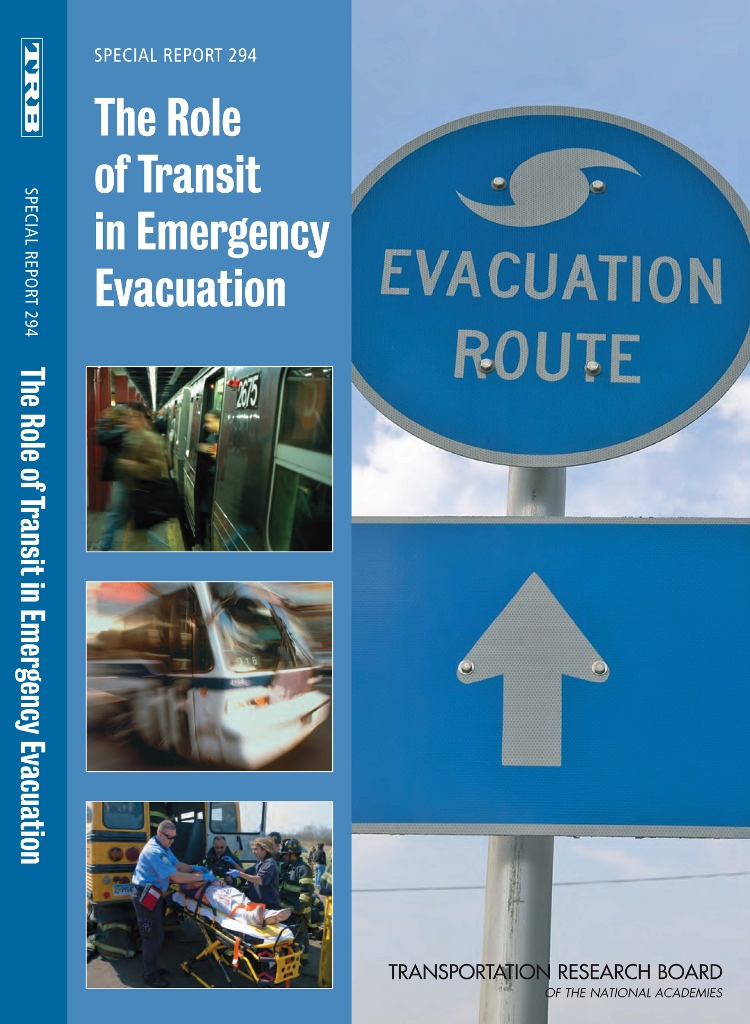Overview
 This report, commissioned by Congress, explores the capacity of transit systems serving the nation’s 38 largest urbanized areas (representing populations of >1 million) to accommodate the evacuation, egress, or ingress of people from or to critical locations in times of emergency. The research is based on a review of the literature, analysis of the 38 regions and respective states’ emergency response and evacuation plans, and five case studies representing different regions, transit agency types, and emergency types (Houston, Chicago, New York-New Jersey, Los Angeles-Long Beach-Santa Ana, and Tampa-St. Petersburg.
This report, commissioned by Congress, explores the capacity of transit systems serving the nation’s 38 largest urbanized areas (representing populations of >1 million) to accommodate the evacuation, egress, or ingress of people from or to critical locations in times of emergency. The research is based on a review of the literature, analysis of the 38 regions and respective states’ emergency response and evacuation plans, and five case studies representing different regions, transit agency types, and emergency types (Houston, Chicago, New York-New Jersey, Los Angeles-Long Beach-Santa Ana, and Tampa-St. Petersburg.
Transit can play a role in each of the four elements that comprise emergency response:
- Mitigation – protection of its own assets and establishing redundant communication systems
- Preparedness – incorporation into plans and representation in emergency command structure
- Response – evacuating those without private vehicle access and delivering emergency responders and equipment to an incident site
- Recovery – reestablishing normal operations and returning evacuees home
The report makes the following recommendations:
- Local emergency managers should focus greater attention on evacuation planning and determine and incorporate a role for transit
- DHS and FEMA should provide guidance on regional evacuation planning, including transit, and states should take the lead in their development
- Federal funding should be provided for regional evacuation planning that includes transit
- Transit agencies should participate in the development of evacuation plans and be full partners in the command structure
- Transit agency emergency operations centers should be linked with those of emergency management agencies, have realtime interoperable communications systems in place, develop effective means of communication with customers before and during emergencies, and participate in drills and exercises
- Evacuation planning must include consideration of the carless, and a public information campaign and sheltering strategy should be developed to target them
- Congress should authorize FTA and FHWA to fund evacuation-related capacity-enhancement projects